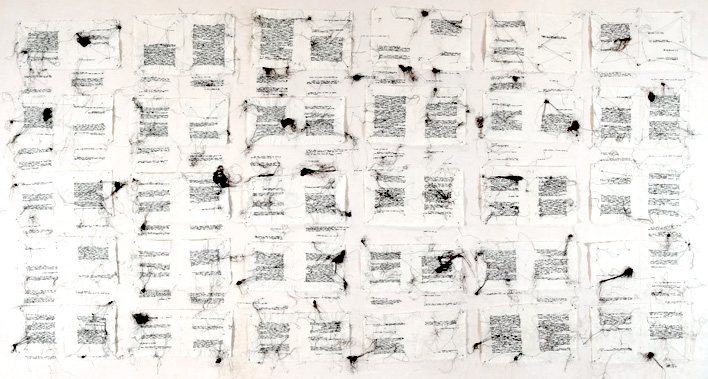Menti opache. Mad Men e la rappresentazione dell’interiorità nelle serie TV
Abstract
Una delle caratteristiche che colpiscono immediatamente lo spettatore di Mad Men è il contrasto tra una superficie visuale lussureggiante, erotizzata, e la freddezza nella descrizione dei personaggi, con i quali è molto difficile empatizzare e la cui psicologia sembra spesso inaccessibile o inespressa, contrariamente a ciò che succede nella maggior parte delle serie televisive. Dopo aver collocato Mad Men in una tradizione seriale che mette la psicologia del personaggio al centro della narrazione cercherò, tramite esempi, di mostrare in che modo e a che scopo l’agenzia autoriale veicola un effetto di “opacità delle menti”. L’analisi dei testi sarà effettuata all’interno di due cornici teoriche: da un lato darò una definizione di “retorica della narrativa”, utilizzando in particolare la teoria di James Phelan, dall’altro il modello della narrazione filmica elaborato da Celestino Deleyto e la conseguente definizione di focalizzazione interna in film e serie TV.
Downloads
Riferimenti bibliografici
Allrath, Gaby – Gymnich, Marion – Surkam, Carola, “Introduction: Towards a Narratology of TV Series”, Narrative Strategies in Television Series, Eds. Gaby Allrath – Marion Gymnich, New York, Palgrave Macmillan, 2005.
Bal, Mieke, Narratology: Introduction to the Theory of Narrative, Toronto, University of Toronto Press, 1985.
Barthes, Roland, La retorica antica, trad. it di Paolo Fabbri, Milano, Bompiani, 1972.
Booth, Wayne C., The Rhetoric of Fiction, Chicago, University of Chicago Press, 1983.
Bordwell, David, Narration in the Fiction Film, New York-London, Routledge, 1985.
Bordwell, David, Poetics of Cinema, New York-London, Routledge, 2008.
Cardini, Daniela, La lunga serialità televisiva. Origini e modelli, Roma, Carocci 2004.
Carveth, Rod – South, James B. (eds.), Mad Men and Philosophy: Nothing Is as It Seems, Hoboke, New Jersey, Wiley, 2010.
Chatman, Seymour, Coming to Terms. The Rhetoric of Narrative in Fiction and Film, Ithaca, Cornell University Press, 1990.
Creeber, Glen, Serial Television. Big Drama on the Small Screen, London, Palgrave Macmillan, 2004.
Deleyto, Celestino, “Focalisation in Film Narrative”, Narratology: An Introduction, Eds. Susana Onega – José Á. García Landa, London, Longman, 1996.
Edgerton, Gary R. (ed.), Mad Men. Dream TV Come True, London and New York, I.B. Tauris, 2011.
Feuer, Jane, "The Lack of Influence of thirtysomething", The Contemporary Television Series, Eds. Michael Hammond, Lucy Mazdon, Edimburgh, Edimburgh University Press, 2005.
Gaudreault, André – Jost, François, “Enunciation and Narration”, A Companion to Film Theory, Eds. Toby Miller – Robert Stam, Malden, MA, Blackwell Publishing, 1999.
Genette, Gérard, Figure III. Discorso del racconto, Torino, Einaudi, 1976.
Giovannetti, Paolo, Il racconto. Letteratura, cinema, televisione, Roma, Carocci, 2012.
Goodlad, Lauren M. E. – Kaganovsky, Lilya – Rushing, Robert A. (eds.), Mad Men, Mad World: Sex, Politics, Style, and the 1960s, Durham and London, Duke University Press, 2013.
Hayward, Jennifer, Consuming Pleasures: Active Audiences and Serial Fictions from Dickens to Soap Opera, Lexington, KY, University of Kentucky Press, 1997.
Klauk, Tobias – Köppe, Tilmann, “Puzzles and Problems for the Theory of Focalization”, The Living Handbook of Narrative Theory, Ed. Peter Hühn et al., Hamburg, Hamburg University, URL: http://www.lhn.uni-hamburg.de/, 2013.
Marcus, Daniel, Happy Days and Wonder Years. The Fifties and the Sixties in Contemporary Cultural Politics, London, Rutgers University Press, 2004.
McCabe, Janet – Akass, Kim, Quality TV: Contemporary American Television and Beyond, London-New York, I.B. Tauris, 2007.
Mittell, Jason, “On Disliking Mad Men”, «Just Tv», 29 luglio 2010, URL: http://justtv.wordpress.com/2010/07/29/on-disliking-mad-men/.
Niederhoff, Burkhard, “Focalization”, The Living Handbook of Narrative Theory, Ed. Peter Hühn et al., Hamburg, Hamburg University, URL: http://www.lhn.uni-hamburg.de/, 2013.
Ono, Kent, “Mad Men’s Postracial Figuration of Racial Past”, Mad Men, Mad World: Sex, Politics, Style, and the 1960s, Eds. Lauren M. E. Goodlad, Lilya Kaganovsky, Robert A. Rushing, Durham and London, Duke University Press, 2013.
Perlman, Allison, “The Strange Career of Mad Men: Race, Paratexts and Civil Rights Memory”, Mad Men, Dream TV Come True, Ed. Gary R. Edgerton, London and New York, I.B. Tauris, 2011.
Phelan, James, “Rhetoric/Ethics”, The Cambridge Companion to Narrative, Ed. David Herman, Cambridge, Cambridge University Press, 2007.
Phelan, James – Rabinowitz, Peter J., “Narrative as Rhetoric”, Narrative Theory: Core Concepts and Critical Debates, Ed. David Herman et al., Ohio University Press, 2012.
Rossini, Gianluigi, “Mad Men e la nostalgia”, Contemporanea, 10, 2012.
Schmidt, Johann N., “Narration in Film”, The Living Handbook of Narrative Theory, Ed. Peter Hühn et al., Hamburg, Hamburg University, URL: http://www.lhn.uni-hamburg.de/, 2014.
Smith, Greg M., Beautiful TV. The Art and Argument of Ally McBeal, Austin, TX, University of Texas Press, 2007.
Stern, Danielle M. – Manning, Jimmie – Dunn, Jennifer C. (eds.), Lucky Strikes and a Three Martini Lunch: Thinking about Television's Mad Men, Newcastle upon Tyne, Cambridge Scholar Publishing, 2012.
Stoddart, Scott F. (ed.), Analyzing Mad Men: Critical Essays on the Television Series, Jefferson, North Carolina and London, McFarland, 2011.
Thompson, Robert J., Television’s Second Golden Age: From Hill Street Blues to ER, Syracuse, Syracuse University Press, 1997.
Timberg, Bernard, "The Rhetoric of the Camera in Television Soap Opera", Television: The Critical View, Ed. Horace Newcomb, Oxford-New York, Oxford University Press, 1984.
Informazioni sul copyright
Questa licenza permette a terzi di riprodurre, distribuire, comunicare al pubblico, esporre in pubblico, rappresentare, eseguire, recitare e modificare quest'opera, purché vengano citati l'autore e la rivista. Questa è la più ampia tra le licenze Creative Commons, rispetto alle libertà concesse a terzi sulle opere licenziate sotto Attribuzione.









